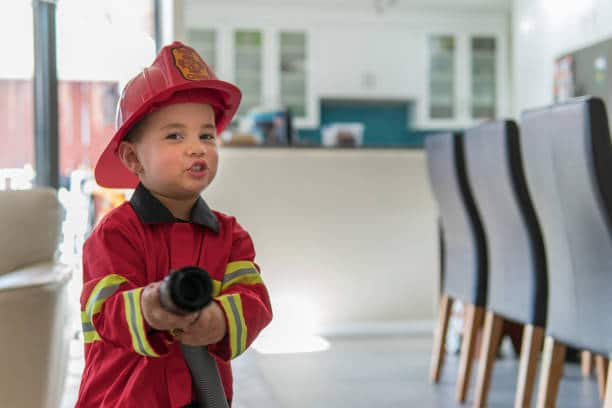National Cervical Cancer Awareness Month: Promoting Prevention and Empowering Lives
Cervical cancer remains a significant global health concern, yet it is one of the most preventable and treatable forms of cancer when detected early.


Do you ever sit down as a family to discuss home fire-safety? If not, now is the best time to start!
Children tend to learn about fire safety awareness at school and many of them practice fire drills regularly. Similarly, it’s vital to educate your children on fire prevention from a young age, emphasizing the importance of safety in the home. By proactively engaging your children in these conversations, you’re taking the first step towards prevention in your home.
Before speaking with your little ones about home-fire-safety, it’s important to understand some of the common in-home hazards and how to prepare your family. Kidde (North America’s leading fire safety brand*) wants to make sure that every home is safe and that everyone has the tools to protect the people, places and things that matter most to them.

With this in mind, let’s look at 3 common household fire hazards and simple tips to help you keep your family and home safe:
Playing with Fire:
It’s normal for children to be naturally curious about fire. They may ask questions such as “how hot is fire?” or show an interest through playing with fire trucks or cooking on a play stove. This is healthy, and an opportunity to begin education as they often don’t understand the dangers that can result from playing with fire or flames. Here are some tips to keep in mind:

Lack of a Fire Escape Plan at Home
Fire safety is all about preparedness and it’s important that children know what to do in the event of a home fire. Create a fire escape plan with your family. It’s a fun family activity and it could be a literal lifesaver.
Remember, if the smoke or CO alarm sounds, get outside and stay outside. Children, especially those playing with “off-limits” appliances, may fear their parents’ reactions, and/or may hide under beds or in closets, believing this will protect them from fires. Kidde encourages parents to teach children that getting outside is the priority in case of a fire.

Outdated Fire Detection Systems
One of the most important ways you can help keep your children protected from fire-related accidents, is to make sure your home is equipped with a fully-up-to date smoke detection system. Working smoke alarms can double the chances of escaping a home fire safely. Here are a few critical reminders and safety tips:
Fire-related accidents involving children can happen. But, by understanding some of the common reasons why they happen and taking a proactive approach, you can greatly reduce the likelihood of an accident occurring in your home and keep your family safe!
For more home fire safety tips and information visit: https://www.kidde.com/fire-safety/en/ca/fire-safety/
Stephanie Berzinski is a Safety Educator and the Senior Manager, External Communications at Kidde, North America’s #1 home fire safety brand*. Stephanie joined Carrier (Kidde’s parent organization) in the Fire & Security segment in 2018, supporting the launch of the Healthy Buildings and Healthy Homes campaigns, as well as the 2022 Cause for Alarm campaign.
Cervical cancer remains a significant global health concern, yet it is one of the most preventable and treatable forms of cancer when detected early.

(And What to Do About It) Today's parents are far more committed to developing strong, loving connections with their kids than previous generations. But one of the things I encounter in my practice as a child and family psychologist is how difficult that is for most parents in the 21st Century. The chief culprit? I’ll…

The holiday season often brings excitement over the latest gadgets and trendy toys. While these gifts can be thrilling in the moment, they may miss the opportunity to offer something truly meaningful: the gift of connection and wellness. This year, why not choose presents that inspire kids to recharge, connect, and grow? Thoughtful gifts like…
